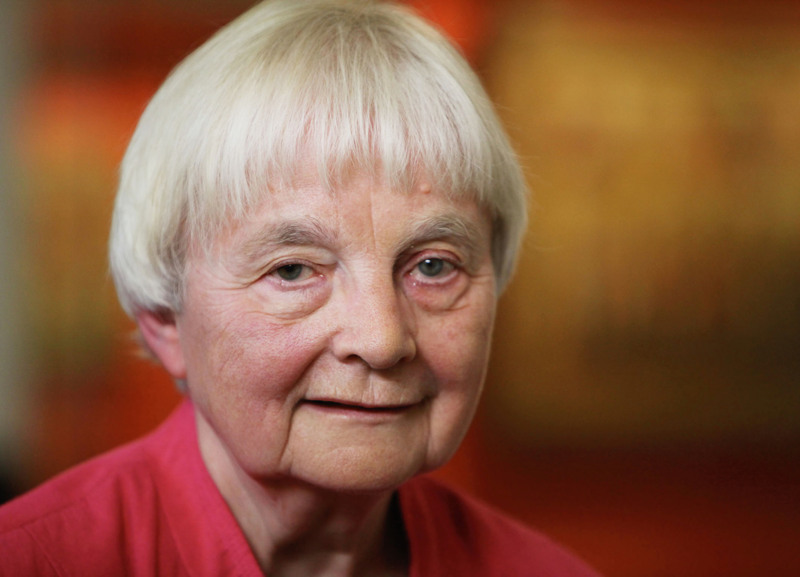The theological message of Christmas is the incarnation: that God comes to us, on our terms, in our language, in our flesh. This downward motion from divine to human is not just to show us the way to the fullness of peace in God, but also to be the Way. If Christmas is this downward motion of divinity (incarnation) then we might understand Easter as the lifting up of the human to the divine in the glorification of the resurrection. One is not complete without the other. That’s why the ancients used to call Advent/Christmas the little Easter. Curiously we seem to associate Christmas more with homecoming, or longing for home. This isn’t foreign from the theological heart of these feast days which invite us to action, movement, trust and abandonment to a new orientation and open future.
In our age of widening perspectives and the hermeneutics of suspicion [Paul Ricœur] we glimpse the idea that memory and truth, the subjective and the objective, feelings, emotions, symbols and metaphors are intertwined. Often what we remember is what we want to remember. In this way we come to say that history/truth is often subjective, or that history is written by the victors. Our context – historical and cultural – impacts the way we write, talk, act and make meaning of what has happened, what is happening, and what we long for.
In Christian theology feminist deconstruction and reconstruction of our theological language is one of the primary drivers of the past 30 years and in the current moment. Elizabeth Schüssler Fiorenza is one of the foremost scholars in this regard. In one of her seminal œuvres, Jesus: Miriam’s Child, Sophia’s Prophet. Critical Issues in Feminist Christology. she writes about the absence and presence that we associate mistakeningly and not enough with Christmas and Easter.
In this work she writes about three important parts of the Resurrection narratives:
-
The Easter message [that Jesus is risen from the dead] is given first to Mary of Magdala and to the other women who went to the grave site.
-
The kerygmatic formula [way in which this promise is proclaimed] in Mark 16:6 and stylized in Matthew 28:5-6 mentions the death of Jesus not in general terms but specifically as a crucifixion. [This is important in that crucifixion was reserved only for treason in the Roman Empire. Jesus is thus tried and executed for subverting the values, ethics and purpose of the hierarchical, misogynistic imperialist colonial Roman power of the ancient mediterranean world.]
-
the Easter message is a proclamation that requires action rather than confession. It is future-oriented rather than backward-looking: the women “seek” Jesus among the dead but are told the the tomb is empty.
She writes, “[i]n sums, the imaginative space of the “empty tomb” [from which we can imagine the theological implications] leads to the proclamation of Jesus as the Resurrected One who has been vindicated. The Living One can be found only when we experience that he “is ahead of us” and that he opens up a fortune for us.
… The empty tomb does not signify absence but presence: it announces the Resurrected One’s presence on the road ahead, in a particular space of struggle and recognition such as Galilee. … The Resurrected One is present in the “little ones,” in the struggles of those impoverished, hungry, imprisoned, trotted and killed, in the wretched of the earth. …The empty tomb proclaims the Living One’s presence in the ekklesia of wo/man [the gathered church community of women and men] gathered in Jesus’ name. … Jesus is going ahead – not going away: so the women in the gGspels, and we with them, are told.
Fiorenza, Jesus: Miriam’s Child, Sophia’s Prophet., p. 123-130
Conversely we can understand this notion of presence that sends us forward, oriented towards the future as also present in the Christmas story or birth narrative. The shepherds are told of the great birth by the angels. Their response is unanimous and action-oriented “Come let us go to Bethlehem and see this for ourselves”. The magi too are sent ahead by this presence, summoned from their homelands to a new land of promise. They must return home by a different way. Encountering this presence has transformed them, sending them to a new future. Simeon and Anna who encountered the baby Jesus in the Temple are too changed, completed by this presence. They are sent forward into the future they they’ve received hints of through prophetic experiences (Luke 2:22-38).
How then is the promise of the presence of Jesus (as a baby, and as the returning Messiah) an encounter that sends you (and us) forward, changed, transformed, sent on a completing journey of discovery and Gospel action? In these last days before Christmas we rush to cross the finish line of what we need to do. Yet in reality the season is an invitation to see life as a journey of action, solidarity and transformation. Our future isn’t achieved on the 25th of December, but something to which we are called, to which we are called to invite others, to which we are called to testify in all we do, say and are. In a time defined by Nietzsche’s famous nihilistic quote that “God is dead” the physical absence of God is actually a presence, an invitation, a call, a life-transforming dynamic.
